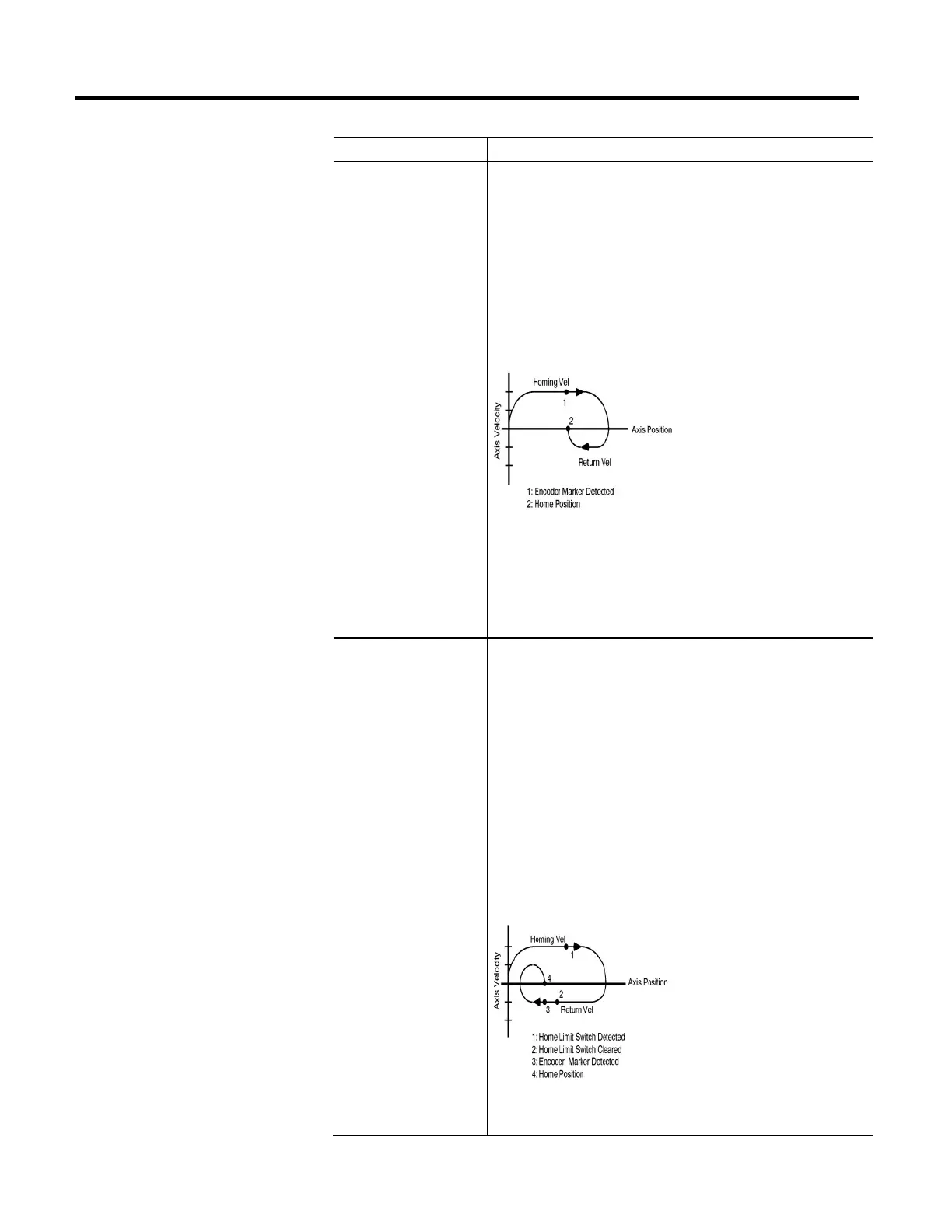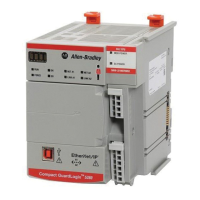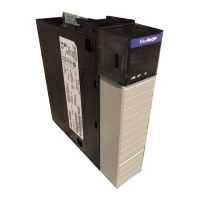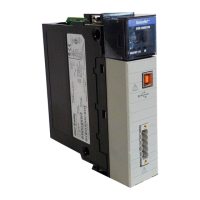360 Rockwell Automation Publication MOTION-RM003I-EN-P - February 2018
Homing Sequence Types Description
Active Bidirectional Home to
Marker
This active homing sequence is useful for single turn rotary and linear encoder
applications since these have only one encoder marker for full axis travel. When this
sequence is performed, the axis moves in the specified Home Direction at the specified
Home Speed and Home Acceleration until the marker is detected. The Home Position is
then assigned to the axis position corresponding to the marker location, and the axis
decelerates to a stop at the specified Home Deceleration.
If Home Offset is non-
zero, then the Home Position will be offset from the point where
the marker is detected by this value. The controller then moves the axis back to the
Home Position at the specified Home Return Speed and Home Acceleration using a
trapezoidal move profile. If the axis is configured as a Cyclic Travel Mode, the move back
to the Home Position takes the shortest path (for example, no more than ½ revolution).
The axis behavior for this homing sequence is depicted in the following diagram:
The accuracy of this homing sequence depends only on the time delay in detecting the
marker transition. The position uncertainty of the home position is the product of the
maximum delay for the control to detect the marker pulse (~1 microsecond) and the
specified Home Speed.
For example, if a Home Speed of 1 inches per second (60 IPM) is specified, the
uncertainty of the home position is calculated as shown below:
Uncertainty = 1 Inch/Sec * 0.000001 Sec = 0.000001 Inch.
Active Bidirectional Home to
Switch then Marker
This is the most precise active homing sequence available. When this sequence is
performed, the axis moves in the specified Home Direction at the specified Home Speed
and Home Acceleration until the home limit switch is detected. The axis then
decelerates to a stop at the specified Home Deceleration and moves in the opposite
direction at the specified Home Return Speed and Home Acceleration until the home
limit switch is cleared. After clearing the home limit switch, the axis continues in the
same direction at the Home Return Speed until the first encoder marker is detected.
The Home Position is assigned to the axis position at the moment that the marker is
detected, and the axis then decelerates to a stop at the specified Home Deceleration. If
Home Offset is non-zero, then the Home Position will be offset from the point where
the marker is detected by this value. The controller then moves the axis back to the
Home Position at the specified Home Return Speed and Home Acceleration using a
trapezoidal move profile.
If the axis is configured in Cyclic Travel Mode, the move back to the Home Position takes
the shortest path (for example, no more than ½ revolution). Axis behavior for this
active homing sequence is depicted in the following diagram:
If the controller detects that the state of the home switch at the start of the homing
sequence is active, the controller immediately reverses the homing direction and
begins the return leg of the homing sequence.

